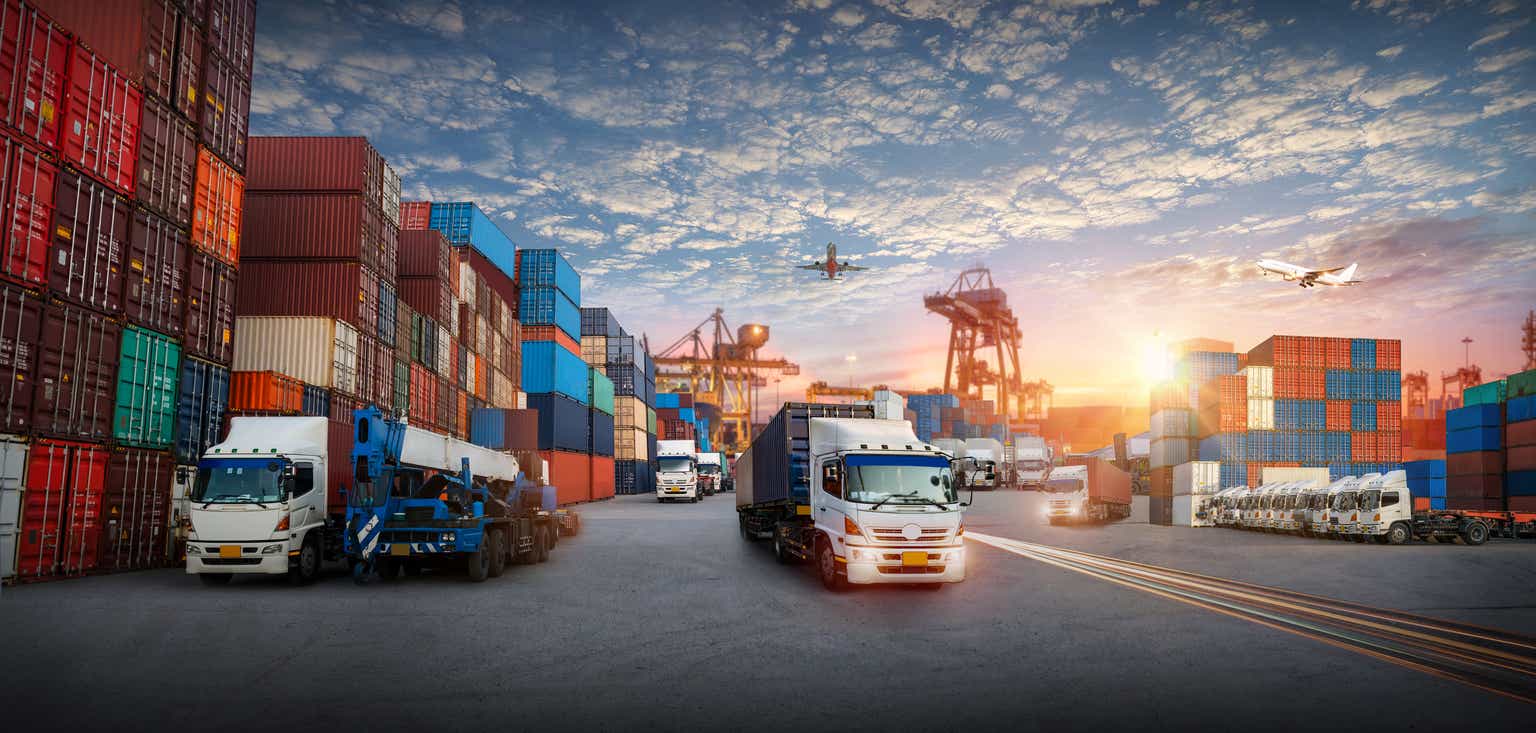thitivong
Billionaire investor and CEO of the world’s largest asset manager, BlackRock, Inc. (BLK) – Larry Fink – just had his company buy a large infrastructure business – Global Infrastructure Partners – for ~$12 billion. This is just the latest move in line with Mr. Fink’s big bet on the global infrastructure sector, which he recently called:
one of the most exciting long-term investment opportunities.
In fact, beyond the value inherent in Global Infrastructure Partners’ existing holdings, the plan is for its management team to lead BLK’s combined infrastructure private markets investment platform. As Global Infrastructure Partners’ CEO, Bayo Ogunlesi stated:
This platform is set to be the preeminent, one-stop infrastructure solutions provider for global corporates and the public sector, mobilizing long-term private capital through long-standing firm relationships.
Of course, it isn’t just BLK’s Larry Fink that is buying infrastructure hand-over-fist: Brookfield Corporation’s (BN) and Brookfield Asset Management Ltd.’s (BAM) Bruce Flatt is pouring hundreds of billions of dollars into infrastructure through both its publicly traded entities as well as its private funds to make his company the world leader in infrastructure investing. Other leading asset managers such as Blackstone Inc. (BX), KKR & Co. Inc. (KKR), Ares Management Corporation (ARES), The Carlyle Group Inc. (CG), and Apollo Global Management, Inc. (APO) are also investing aggressively in the space.
In this article, we will discuss why we believe the world’s leading asset managers are pouring hundreds of billions of dollars into infrastructure investments and then share some of our top infrastructure picks of the moment.
Why Billionaire Investors Are Bullish On Infrastructure
There are five major ‘D’ factors that are driving the robust ongoing investment into the infrastructure space:
- Demographics: The world’s leading economies are almost universally aging at a rapid pace. Moreover, particularly in places like the United States, the vast majority of the wealth is concentrated in the older generations. As a result, there is more demand than ever for stable cash-flowing investments that offer attractive, defensive, and inflation-resistant yields to fund retirements. Infrastructure – with its mission-critical, highly contracted, and generally inflation-resistant nature – is an ideal asset class for this sort of portfolio need, making it particularly intriguing for asset managers to invest in as they seek to serve client needs.
- Development: The rapid economic growth in many of the economies of Southeast Asia and Latin America has dramatically increased the need for infrastructure in these countries. From energy to transportation to water, many of these countries still lack sufficient infrastructure to provide the basic necessities to their populations. Moreover, in developed economies – particularly the United States – there is an urgent need to upgrade much of our infrastructure, including airports, bridges, highways, and electric grid. The recently passed infrastructure bill is a start towards fixing this infrastructure, but the need is so vast that it will ultimately take a considerable amount of private sector capital to completely and sufficiently update and upgrade the U.S.’s infrastructure.
- Digitalization: The rapid onset of the fourth industrial revolution is driving incredible demand for digital infrastructure, including towers from companies like American Tower Corporation (AMT) and data centers from companies like Digital Realty Trust, Inc. (DLR). These alternative asset managers are investing aggressively alongside these specialists to help them scale up their data infrastructure even faster. The expected demand growth – especially due to the rapid growth of artificial intelligence – remains immense, meaning that there is a lot of investment opportunity available to these asset managers.
- Deglobalization: There is also a strong move towards reshoring manufacturing and critical infrastructure as the West is moving rapidly to decouple itself from China in the event that CCP leader Xi Jinping decides to invade Taiwan in the near future. This is leading to a surge in demand for infrastructure in the United States and Western Europe. For example, Intel Corporation (INTC) and Taiwan Semiconductor Manufacturing Company Limited (TSM) are building chip factories in Arizona as part of America’s drive toward achieving semiconductor independence from Taiwan.
- Decarbonization: Finally, the effort to reduce global carbon emissions is also driving significant demand for increased production of renewable energy. This means that hundreds of billions of dollars – if not trillions – of additional investment will be needed in the coming decades to dramatically increase the production of solar, wind, nuclear, and other low-carbon/carbon-free forms of energy.
Our Top Infrastructure Picks
While infrastructure is our top long-term investing theme, and we are bullish on quite a few companies in the space, here are two of the opportunities that we like right now that are particularly well-positioned to benefit from these five aforementioned bullish infrastructure trends:
BIP’s diversified exposure to midstream (AMLP), utilities (XLU), transportation, and data sectors gives it a very stable cash flow profile that makes it an ideal solution for retirees looking for stable, cash-flowing investments. Moreover, its strong contracted cash flow profile with significant inflation indexation makes it quite defensive and inflation-resistant.
Moreover, its substantial and diverse presence in the United States, Europe, and developing economies across the world put it in a strong position to benefit from the strong investment trends in both developed and developing economies.
BIP’s growing involvement in the data sector, including investments in towers, semiconductor manufacturing plants, and data centers, positions it to capitalize on the growing demand for digital infrastructure. As the fourth industrial revolution unfolds, BIP is well-positioned to benefit from the increasing need for data-related assets.
With exposure to various sectors crucial for reshoring manufacturing, including utilities, transportation, and data infrastructure, BIP is strategically positioned to benefit from the aforementioned trend of reshoring critical infrastructure.
Similar to BIP, BEP’s highly contracted, defensive, and inflation-indexed cash flow profile makes it an ideal investment for retirees looking for stable and growing cash flow.
Moreover, with a global presence and a diverse collection of renewable energy assets, BEP is positioned to remain a major player in facilitating infrastructure development in both emerging and leading economies.
When it comes to digitalization, BEP’s role as a major producer of electricity makes it an important player, as leading AI powerhouses such as Amazon.com, Inc. (AMZN) have partnered with them to power their facilities.
Deglobalization will once again likely help BEP as the growing need for infrastructure in the United States will drive greater demand for electricity that BEP produces.
Last, but not least, BEP is at the forefront of the decarbonization effort, being a leading renewable power generation company. Its investments in hydro, solar, and wind resources contribute significantly to the production of clean and sustainable energy, aligning with global efforts to reduce carbon emissions. Additionally, its recent acquisition of Westinghouse from Brookfield Business Partners L.P. (BBU), Brookfield Business Corporation (BBUC) makes it an increasingly important player in the production of nuclear power.
Given that both businesses also boast strong BBB+ credit ratings, significant competitive advantages thanks to support from one of the largest investors in the world (their parent, Brookfield), impressive track records of generating market-crushing total returns and distribution growth, and offer attractive yields well-north of 5%, both BIP and BEP offer investors compelling combinations of current yield and long-term growth potential.
Investor Takeaway
Billionaire Larry Fink’s recent major foray into infrastructure is just the latest in a long line of billionaire investors who are pouring a lot of capital into the sector. Given the bullish long-term trends of aging demographics in leading economies driving demand for stable cash-flowing investments, global infrastructure development needs, accelerating digitalization demand, deglobalization reshoring initiatives, and the push for decarbonization, we think that infrastructure is a compelling sector to be investing in right now. In BIP and BEP, investors get a compelling value proposition along with fairly defensive business models that are very well run. Investors should also note that while BIP and BEP issue K1s, they are still designed to be suitable for holding in retirement accounts. For investors who do not want to deal with K1s at all, BIPC and BEPC are K1-free economic equivalents.

